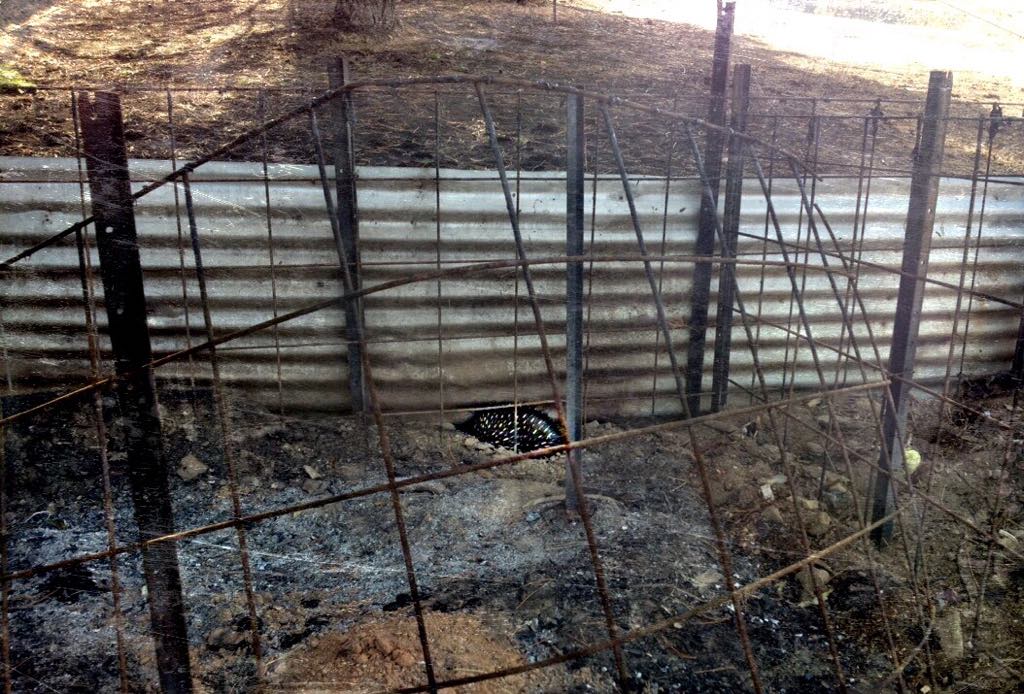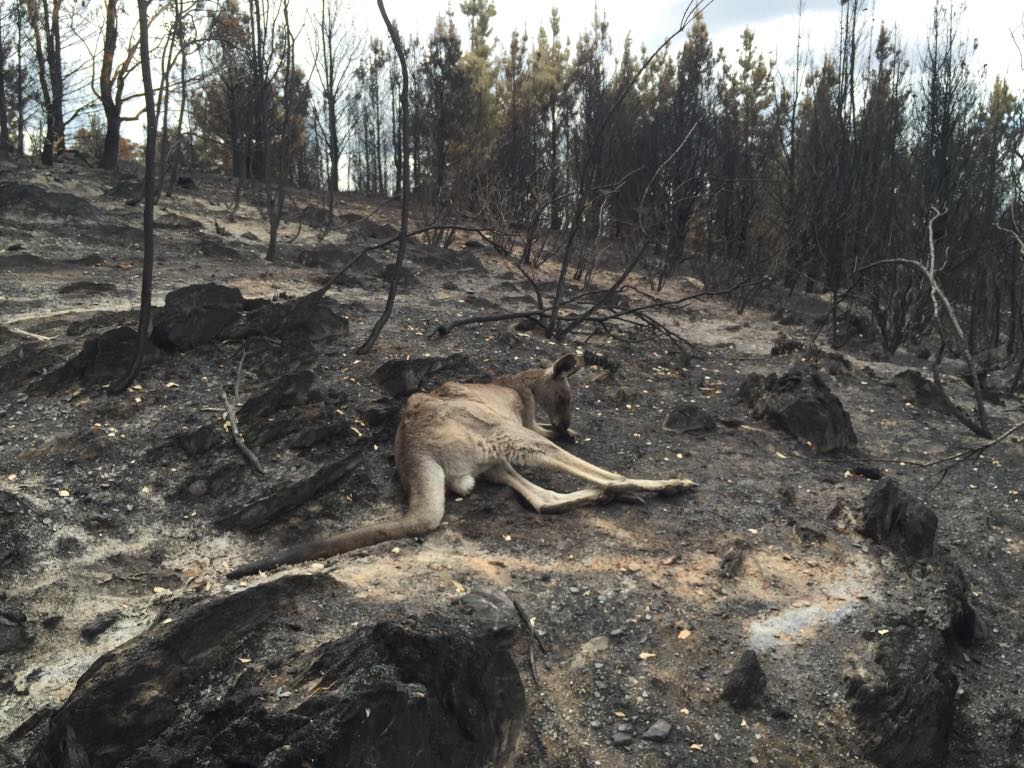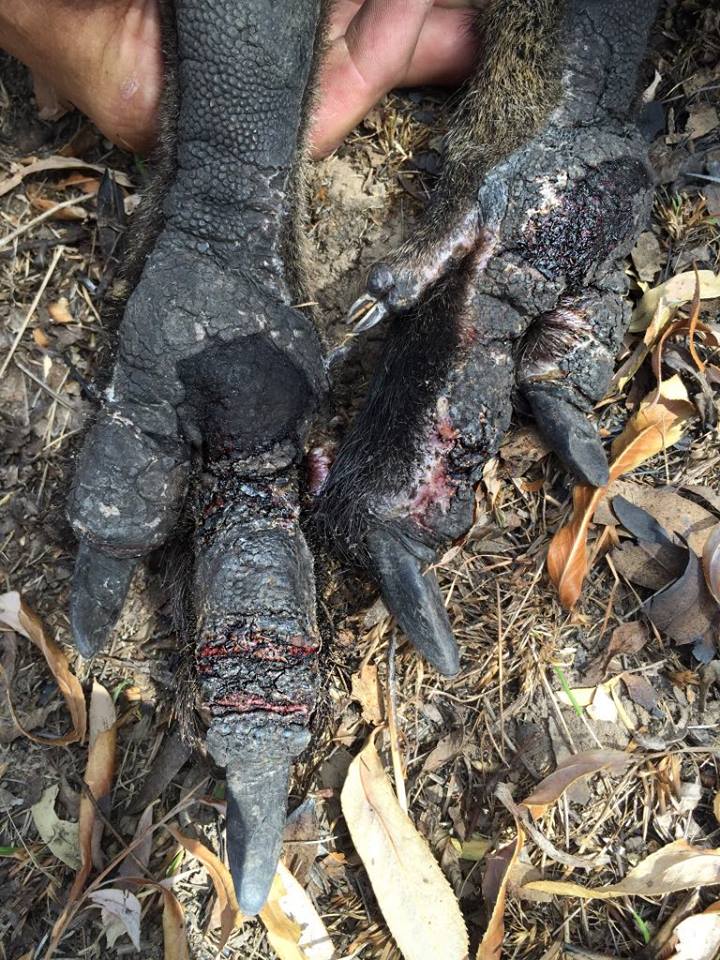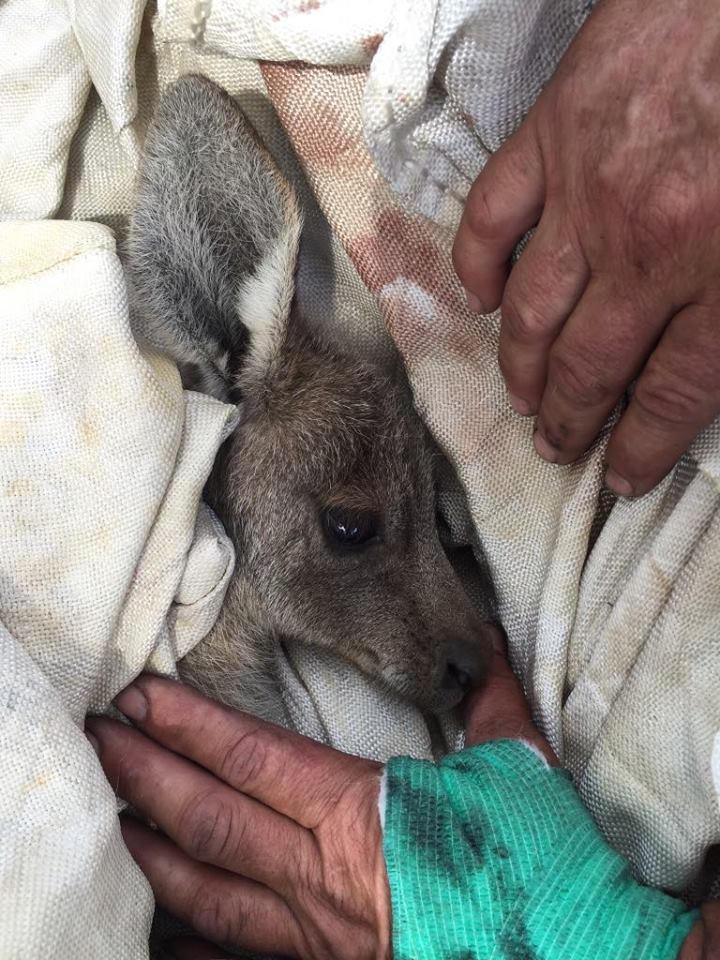Fire
Fire
Uncontrolled bushfires can have disastrous effects on people, companion animals, properties and livestock, right? But what about wildlife?
The majority of fires (natural and deliberate) occur during daylight hours, peaking between 3pm and 6pm. With many Australian animals being either nocturnal or crepuscular they tend to be asleep when bushfires start. This means that their reaction time is greatly diminished and they often don’t have enough time to escape. In times of danger, possums tend to run UP rather than away, as they vacate their hollows or dreys. And minuscule creatures like pygmy possums and feathertail gliders have no hope of escaping as they are too tiny (often no more than 12grams!)
Birds and bats may be able to fly away but if they have youngsters that can’t yet fly, those will be left behind.
Echidnas may dig themselves underground and survive the inferno but then emerge to a hot fire-ground and burn their feet or die from a lack of food.

Spot the echidna. She was able to dig down to avoid the conflagration but emerged to a blackened area where food was no longer available.
Other animals - such as kangaroos and wallabies - may escape the initial blaze but then try to return to their home range too soon and sustain burns to their feet and tails when treading on the scorched earth. Without treatment, they may become prone to infection through the burns.

Kangaroos returning to their feeding grounds may suffer burns on the still-hot ground or starve from lack of food.

Burnt feet are not only painful but may become infected.

Joeys with burnt feet cannot keep up with the mob and may get left behind.
Most burns affect the eyes and sensitive noses of animals and smoke inhalation is also a consideration. Many that survive the initial fire with minimal burns can later get infections if treatment is not administered.
Immediate First Aid would include pain relief and rehydration.
An ongoing treatment plan would include pain management, fluid therapy, antibiotic treatment and regular dressing changes. Initial pain relief isn’t necessarily confined to medication. Immobilising the patient, keeping them in a dark, quiet place, cooling the burns, and even just providing a quick non-stick dressing counts as pain relief.
Our firefighters are able to keep an eye out for critters during a blaze. However, it’s the aftermath (burnt habitat, lack of food and post-fire burns) that they can’t possibly prevent. We have to rely on the public to contact us if they see something unusual.
How can members of the public help burnt or affected wildlife?
- Putting water out in shallow ceramic or terracotta bowls for fire-affected and dehydrated animals;
- Keeping an eye out for unusual behaviour in wildlife such as disorientation, excessive panting or licking, paraparesis or weakness of the limbs;
- Keeping pets indoors to allow wildlife to move through properties safely whilst wildlife are in search of food and water;
- Providing homes for those that have lost their habitat e.g. wooden boxes in trees for possums and gliders, logs or tubing on the ground for reptiles, bandicoots and other small mammals.
What veterinarians can do to assist:
- Provide appropriate pain relief;
- Provide parenteral fluids;
- Clean and debride burns under anaesthesia;
- Dress wounds and provide follow-up dressing changes;
- Administer antibiotics.
If you find a wild animal that has been fire-affected, please call for help immediately:
Sydney Wildlife (24 hours)
9413 4300
or
WIRES 1300 094 737
Immediate action can save lives so please be prepared for the bushfire season🔥.
By Lynleigh Grieg
Sydney Wildlife